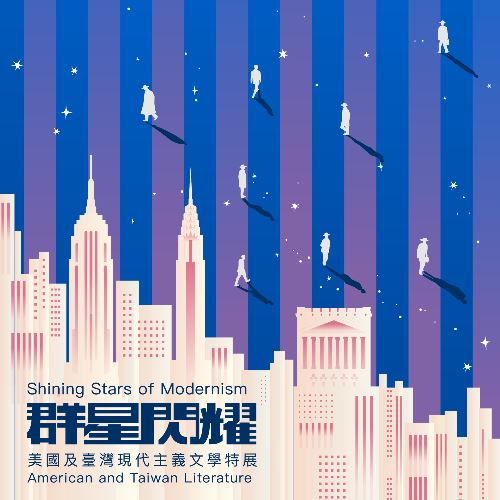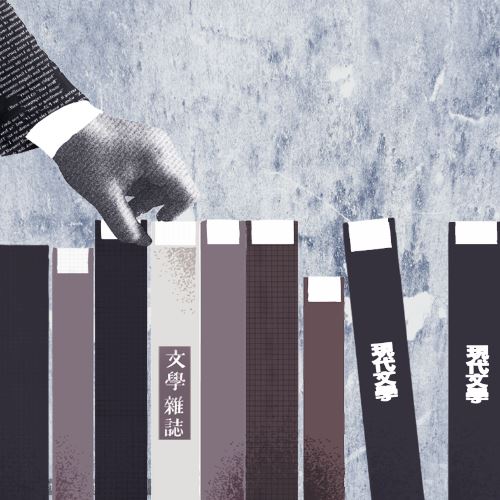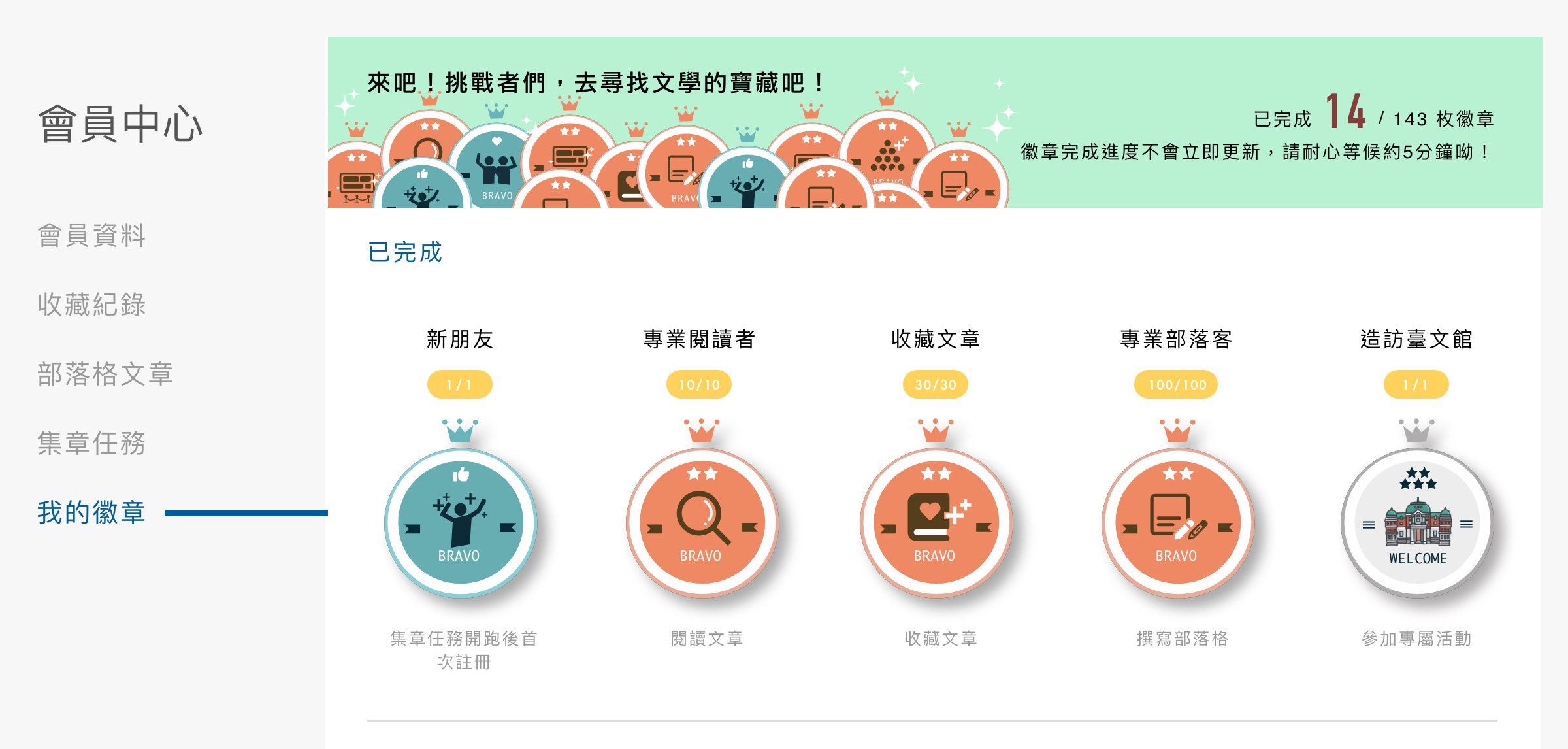✧ The Impact of Modernism and American Culture ✧ The Founding of World Today ✧ The American Literature of World Today ✧
✧ The Great Gatsby: A Classic about "American Dream" ✧ Nativist Literature: Faulkner and Wang Chen-ho ✧
✧ Peak Subtlety: Hemingway's The Old Man and the Sea ✧
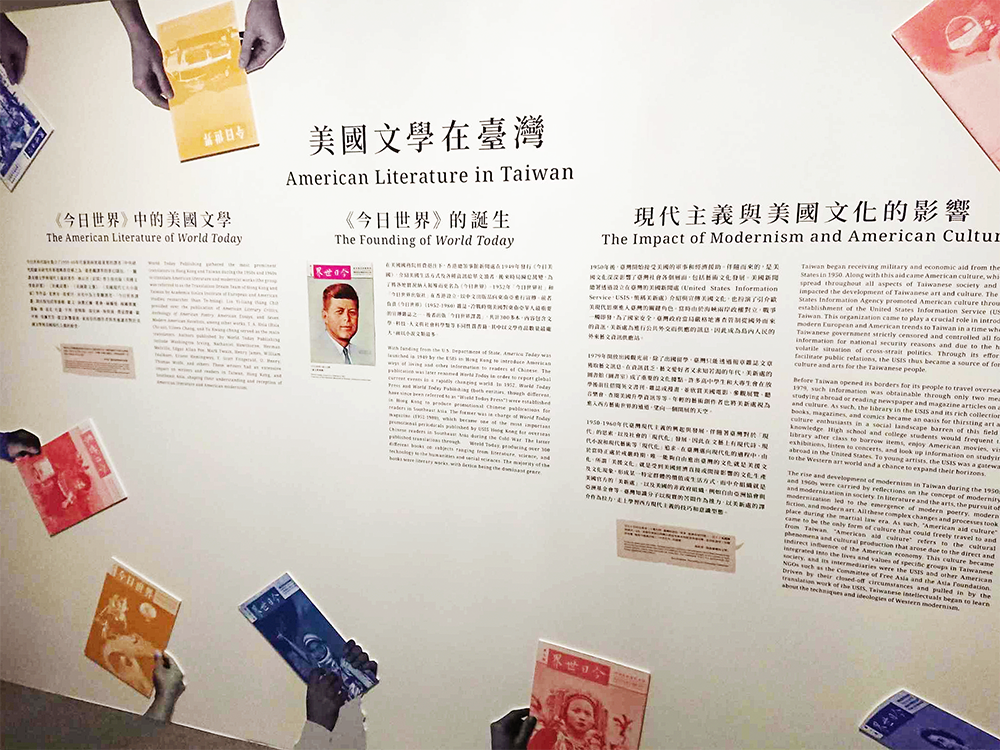
The Impact of Modernism and American Culture
Taiwan began receiving military and economic aid from the United States in 1950. Along with this aid came American culture, which soon spread throughout all aspects of Taiwanese society and deeply impacted the development of Taiwanese art and culture. The United States Information Agency promoted American culture through the establishment of the United States Information Service (USIS) in Taiwan. This organization came to play a crucial role in introducing modern European and American trends to Taiwan in a time when the Taiwanese government strictly censored and controlled all foreign information for national security reasons and due to the highly volatile situation of cross-strait politics. Through its efforts to facilitate public relations, the USIS thus became a source of foreign culture and arts for the Taiwanese people.
In the 20 years since the 1950s, Taiwan's politics, military, and economics have been branded one by one by the United States. Naturally, it is difficult for culture and thought to run counter to such rooted policies, and so they have met the same fate. The trademark "R.O.C.-U.S. partnership" has subtly appeared everywhere.
——Kuo Sung-fen, "Discussion on Taiwanese Literature"
Before Taiwan opened its borders for its people to travel overseas in 1979, such information was obtainable through only two means: studying abroad or reading newspaper and magazine articles on arts and culture. As such, the library in the USIS and its rich collection of books, magazines, and comics became an oasis for thirsting art and culture enthusiasts in a social landscape barren of this field of knowledge. High school and college students would frequent the library after class to borrow items, enjoy American movies, visit exhibitions, listen to concerts, and look up information on studying abroad in the United States. To young artists, the USIS was a gateway to the Western art world and a chance to expand their horizons.
The rise and development of modernism in Taiwan during the 1950s and 1960s were carried by reflections on the concept of modernity and modernization in society. In literature and the arts, the pursuit of modernization led to the emergence of modern poetry, modern fiction, and modern art. All these complex changes and processes took place during the martial law era. As such, "American aid culture" came to be the only form of culture that could freely travel to and from Taiwan. "American aid culture" refers to the cultural phenomena and cultural production that arose due to the direct and indirect influence of the American economy. This culture became integrated into the lives and values of specific groups in Taiwanese society, and its intermediaries were the USIS and other American NGOs such as the Committee of Free Asia and the Asia Foundation. Driven by their closed-off circumstances and pulled in by the translation work of the USIS, Taiwanese intellectuals began to learn about the techniques and ideologies of Western modernism.
The Founding of World Today
At that time, USIS almost played the role of a literary and artistic salon in Taipei. It was an honor for avant-garde exhibitions to be held there. In the catchphrase among college students, "Come, come, come. Come to National Taiwan University. Go, go, go. Go to the United States," a part that was not mentioned but was implied was, "Read, read, read. Read World Today."
——Fu Yueh-an, Silverfish Head's Map of Old Bookstores
With funding from the U.S. Department of State, America Today was launched in 1949 by the USIS in Hong Kong to introduce American ways of living and other information to readers of Chinese. The publication was later renamed World Today in order to report global current events in a rapidly changing world. In 1952, World Today Press and World Today Publishing (both entities, though different, have since been referred to as “World Today Press”) were established in Hong Kong to produce promotional Chinese publications for readers in Southeast Asia. The former was in charge of World Today magazine (1952-1980), which became one of the most important promotional periodicals published by USIS Hong Kong for overseas Chinese readers in Southeast Asia during the Cold War. The latter published translations through World Today, producing over 300 different books on subjects ranging from literature, science, and technology to the humanities and social sciences. The majority of the books were literary works, with fiction being the dominant genre.
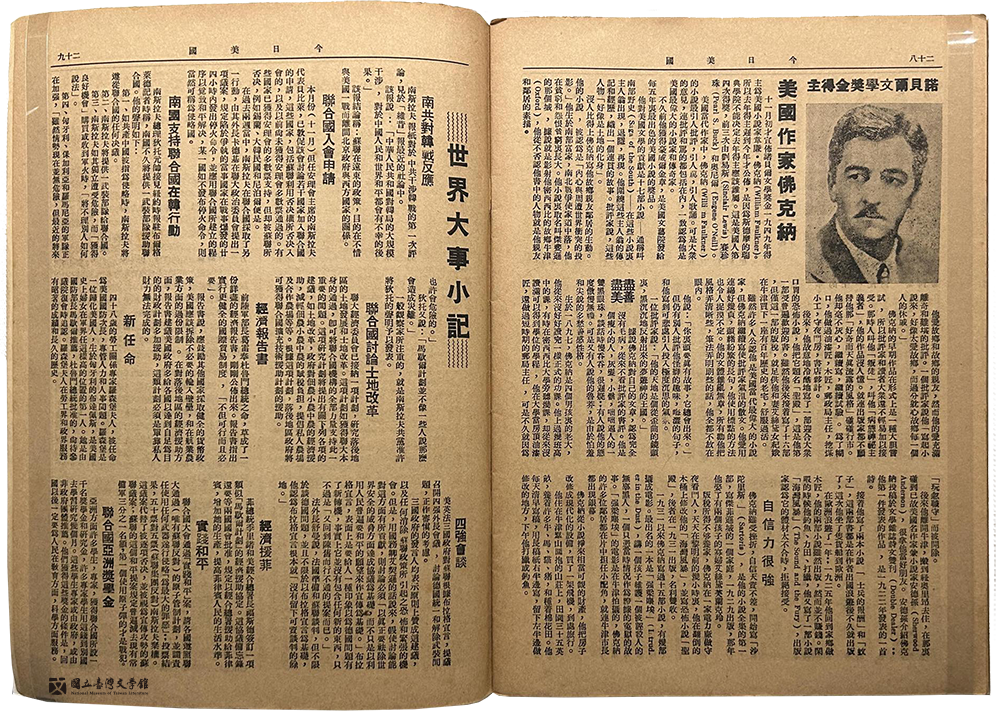
◪ America Today, Issue 29
Published in 1950, introduced the Nobel Prize winner Faulkner's life, family, writing style, and related comments. (Courtesy of the National Museum of Taiwan Literature.)
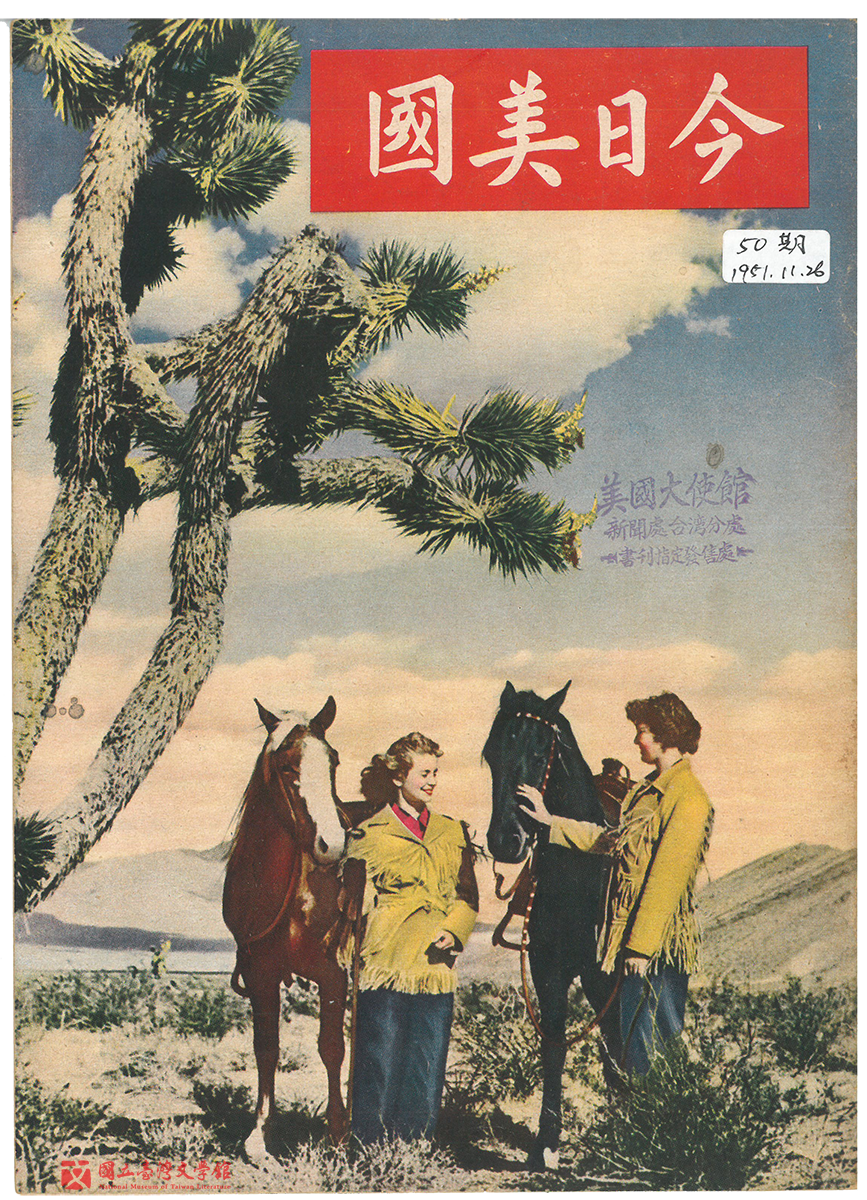
◪ America Today, Issue 50
Published in 1951 by the USIS in Hong Kong and the cover was printed "U.S. Embassy Taiwan Branch". (Courtesy of the National Museum of Taiwan Literature.)
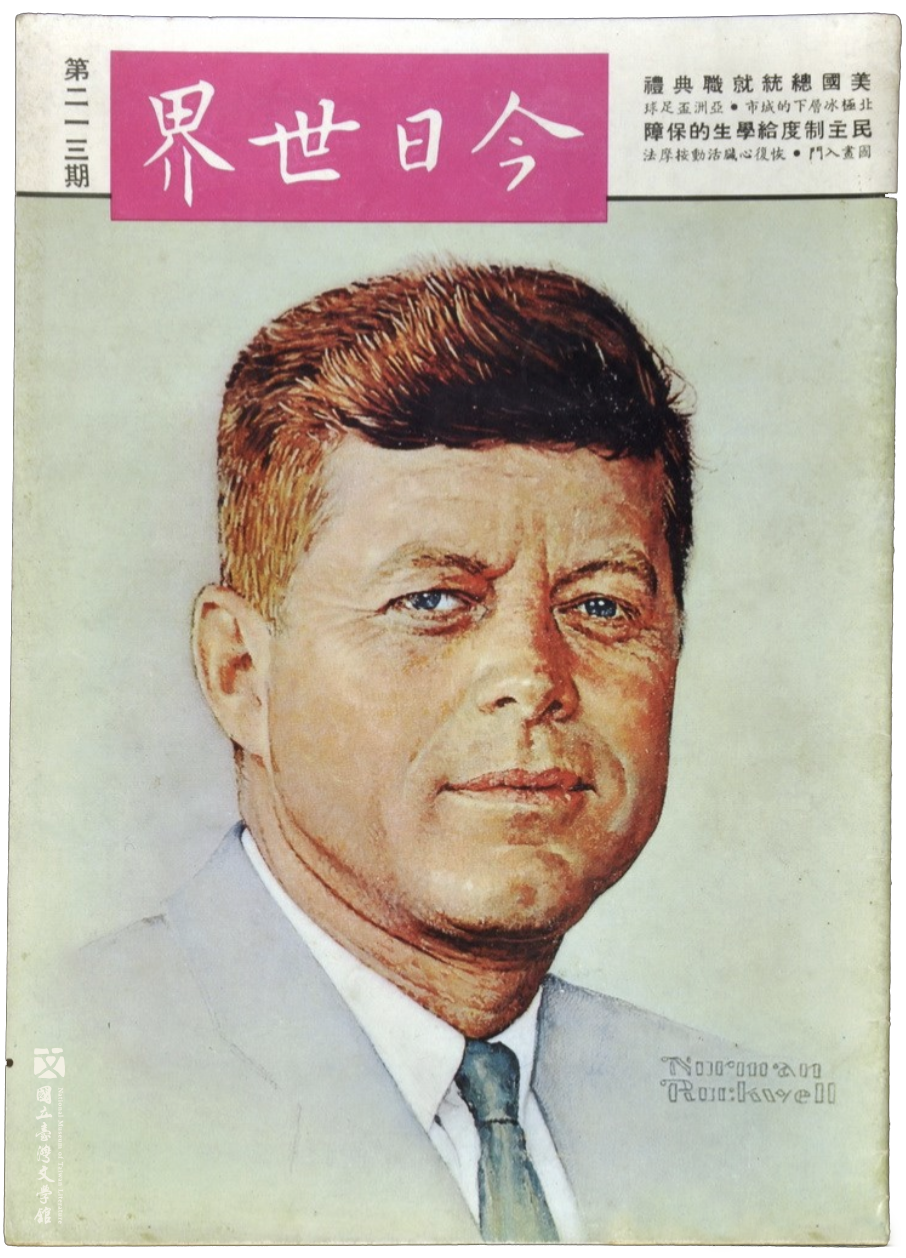
◪ World Today, Issue 213, February 1961
Courtesy of the National Museum of Taiwan Literature.
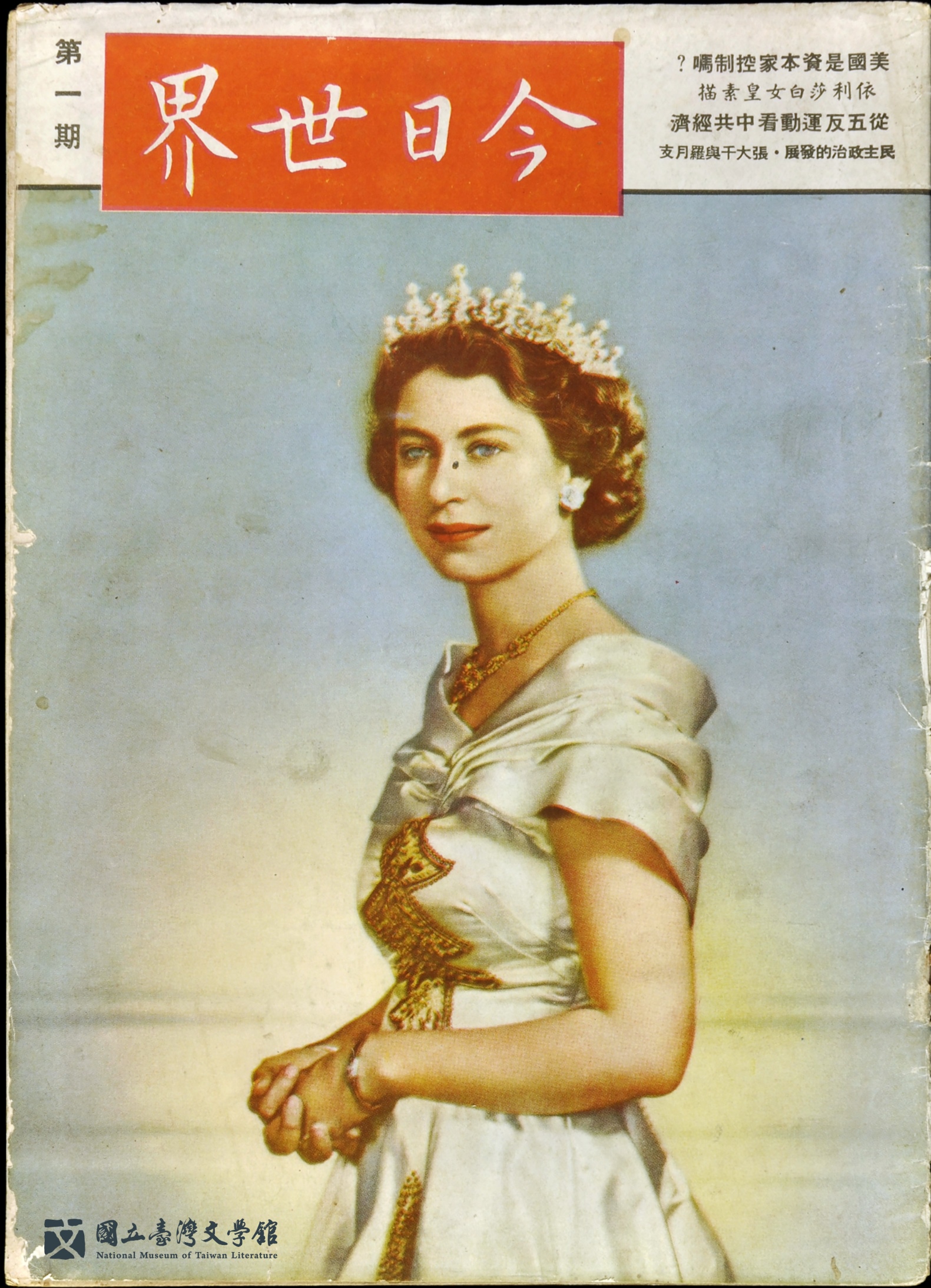
◪ World Today, Issue 1
Published on March 1952. The issue features Queen Elizabeth II on the cover. (Courtesy of the National Museum of Taiwan Literature Collections.)
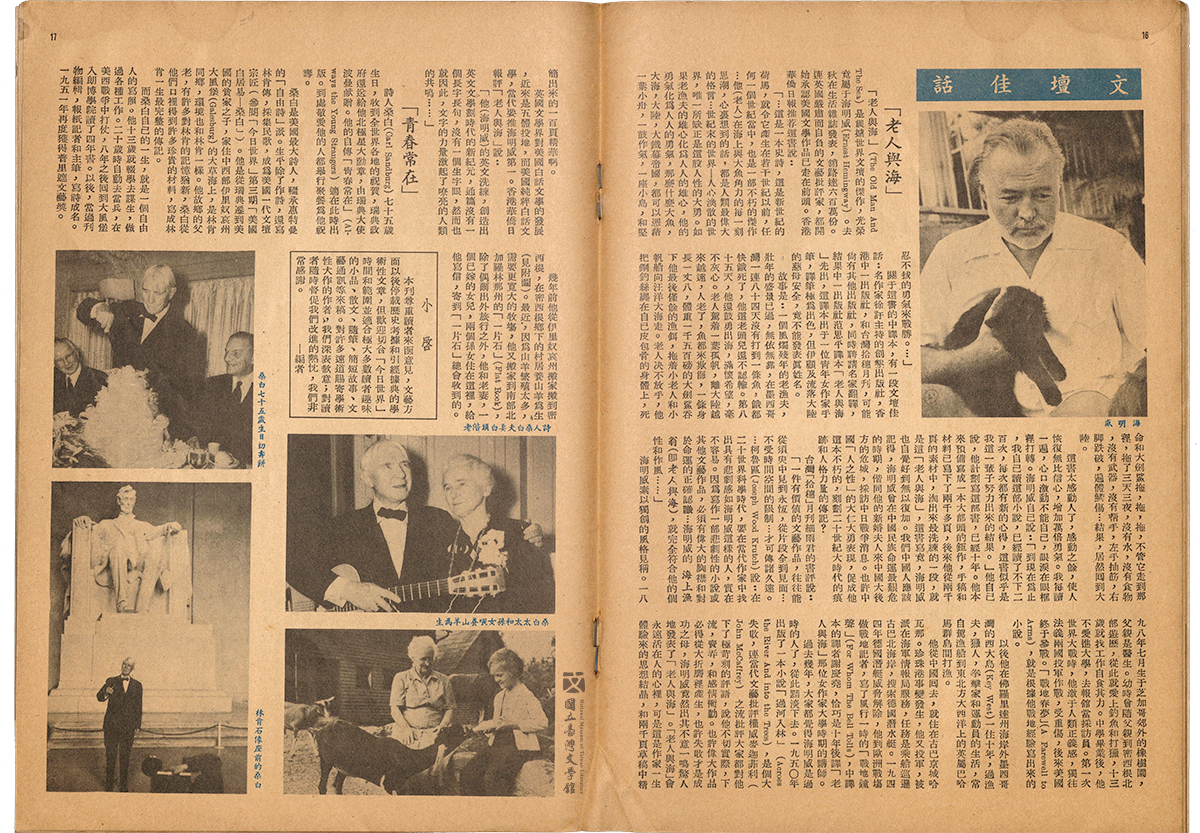
◪ World Today, Issue 26
Published in 1953. Mentioned the sales and impact of The Old Man and the Sea reaching 6 million copies when it was first published in Life magazine in the autumn of 1952. (Courtesy of the National Museum of Taiwan Literature Collections.)
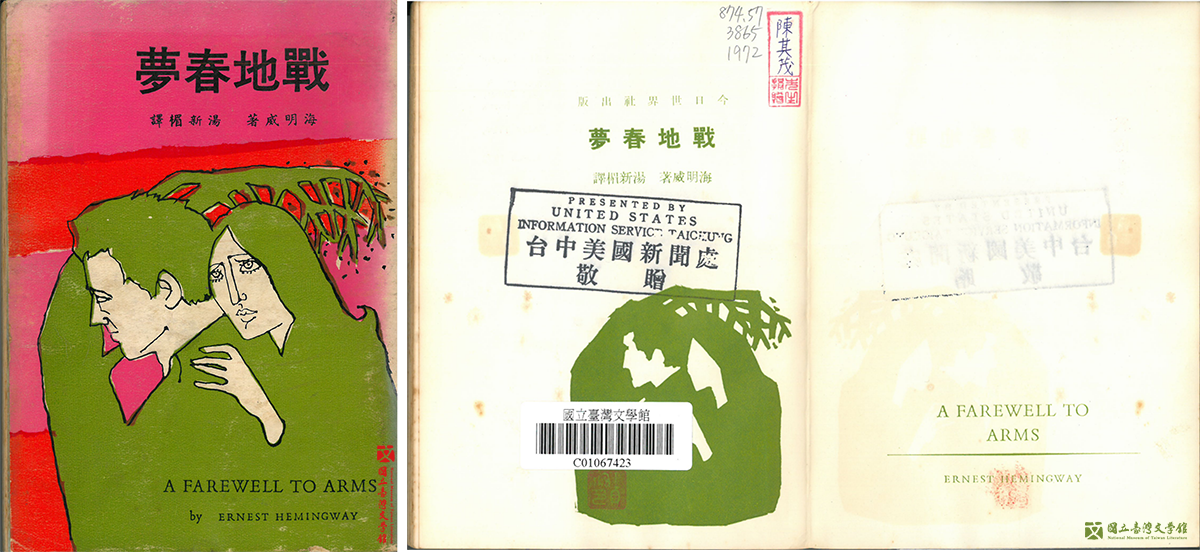
◪ A Farewell to Arms by Ernest Hemingway, Translated by Tang Xin-mei,1966
Published by World Today Publishing, printed "PRESENTED BY UNITED STATES INFORMATION SERVICE TAICHUNG" on the book title page. (Courtesy of the National Museum of Taiwan Literature.)
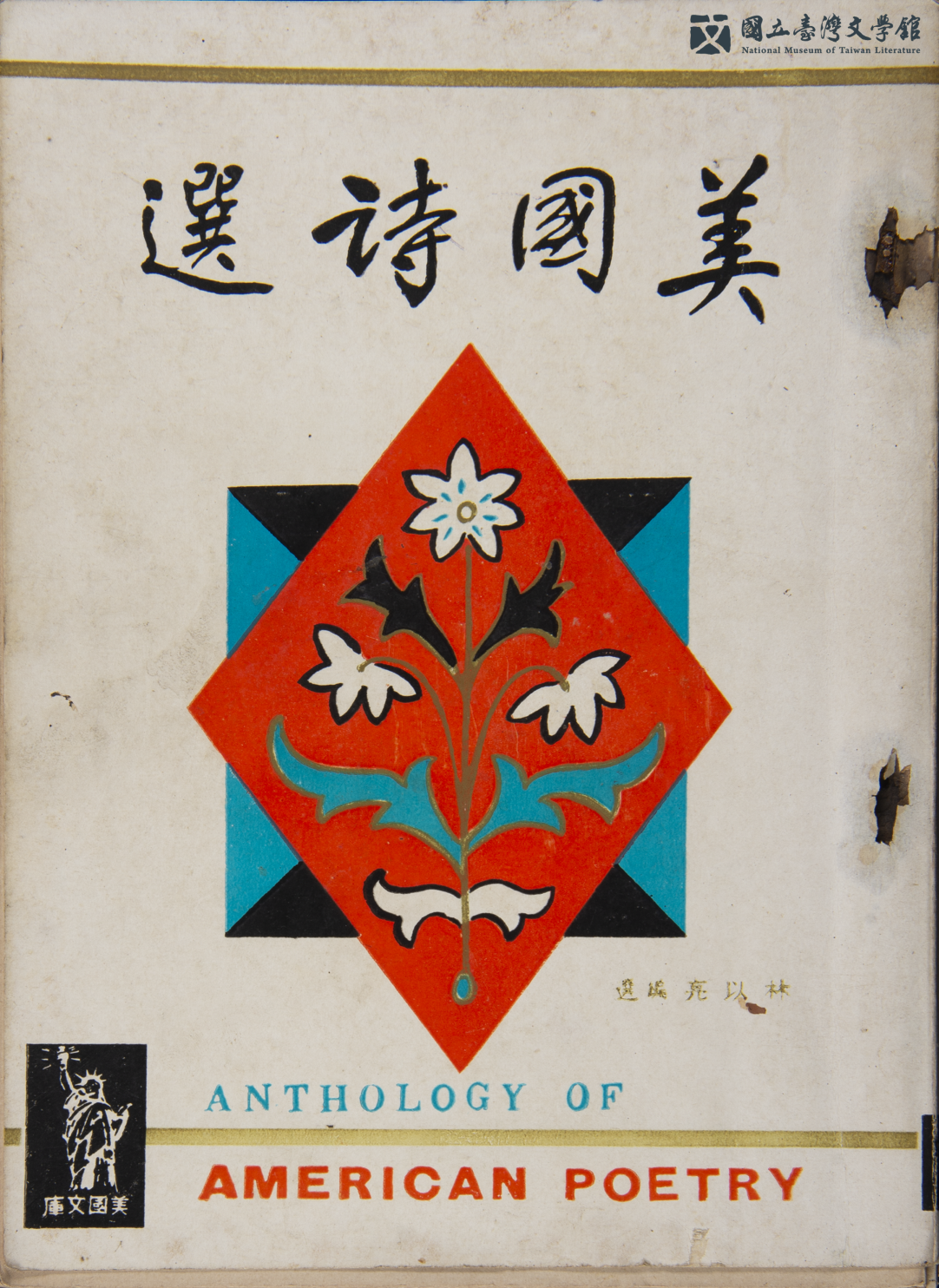
◪ Anthology of American Poetry Compiled by Lin Yi-liang, 1968
Published by World Today Publishing. (Courtesy of the National Museum of Taiwan Literature Collections.)
The American Literature of World Today
World Today Publishing gathered the most prominent translators in Hong Kong and Taiwan during the 1950s and 1960s to translate American literature and modernist works (the group was referred to as the Translation Dream Team of Hong Kong and Taiwan by Academia Sinica Institute of European and American Studies researcher Shan Te-hsing). Lin Yi-liang (Sung Chi) presided over the publication of American Literary Critics, Anthology of American Poetry, American Essays, and Seven Modern American Novelists, among other works. T. A. Hsia (Hsia Chi-an), Eileen Chang, and Yu Kwang-chung served as the main translators. Authors published by World Today Publishing include Washington Irving, Nathaniel Hawthorne, Herman Melville, Edgar Allan Poe, Mark Twain, Henry James, William Faulkner, Ernest Hemingway, F. Scott Fitzgerald, O. Henry, Thomas Wolfe, and others. These writers had an extensive impact on writers and readers in Taiwan, Hong Kong, and Southeast Asia, shaping their understanding and reception of American literature and American modernism.
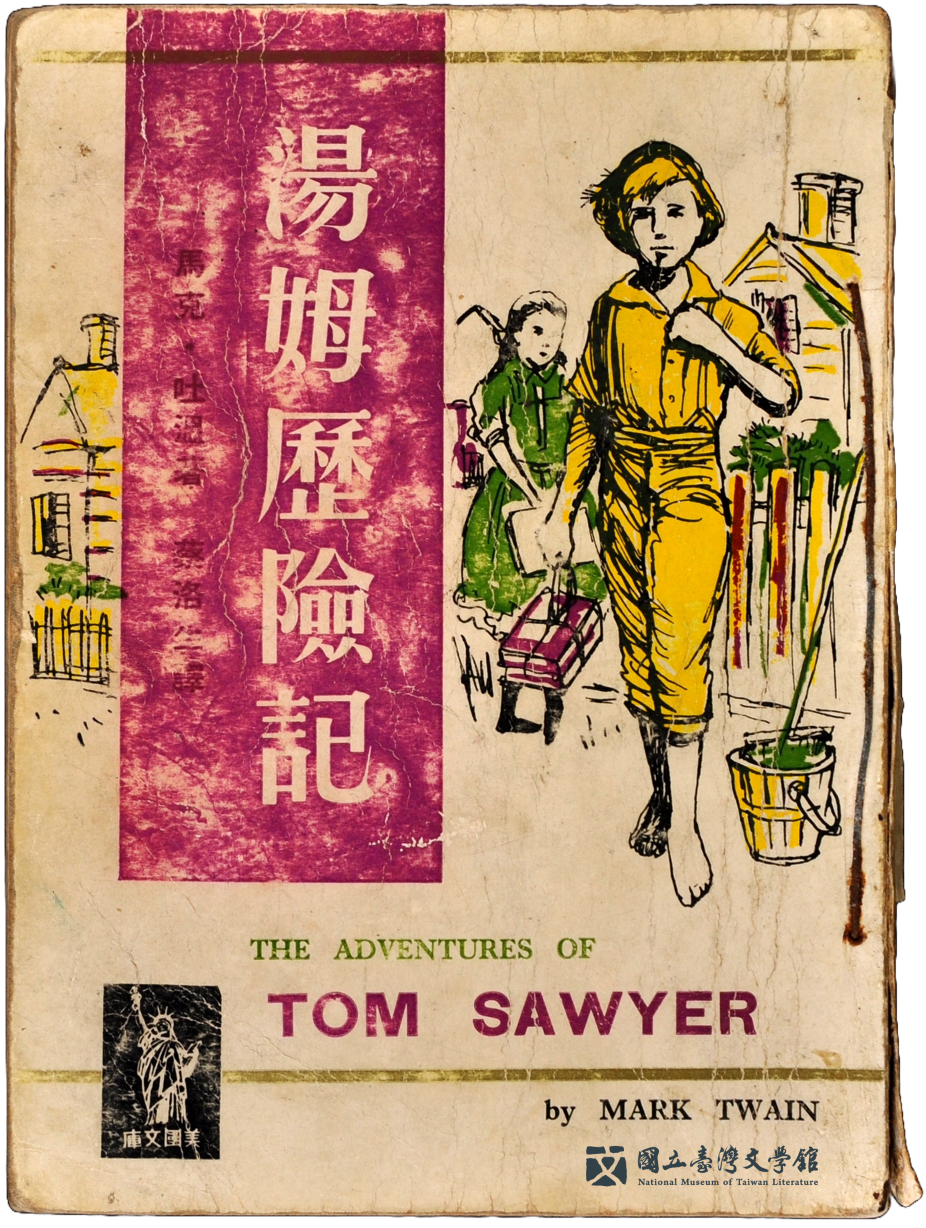
◪ The Adventures of Tom Sawyer by Mark Twain, translated by Cai Zhuo-tang, 1964
Published by World Today Publishing . The translator's pen name was usually Siguo or Cai Siguo. Here, he was signed Cai Luo-sheng, and there is also the context of the translation of this book. (Courtesy of the National Museum of Taiwan Literature Collections.)
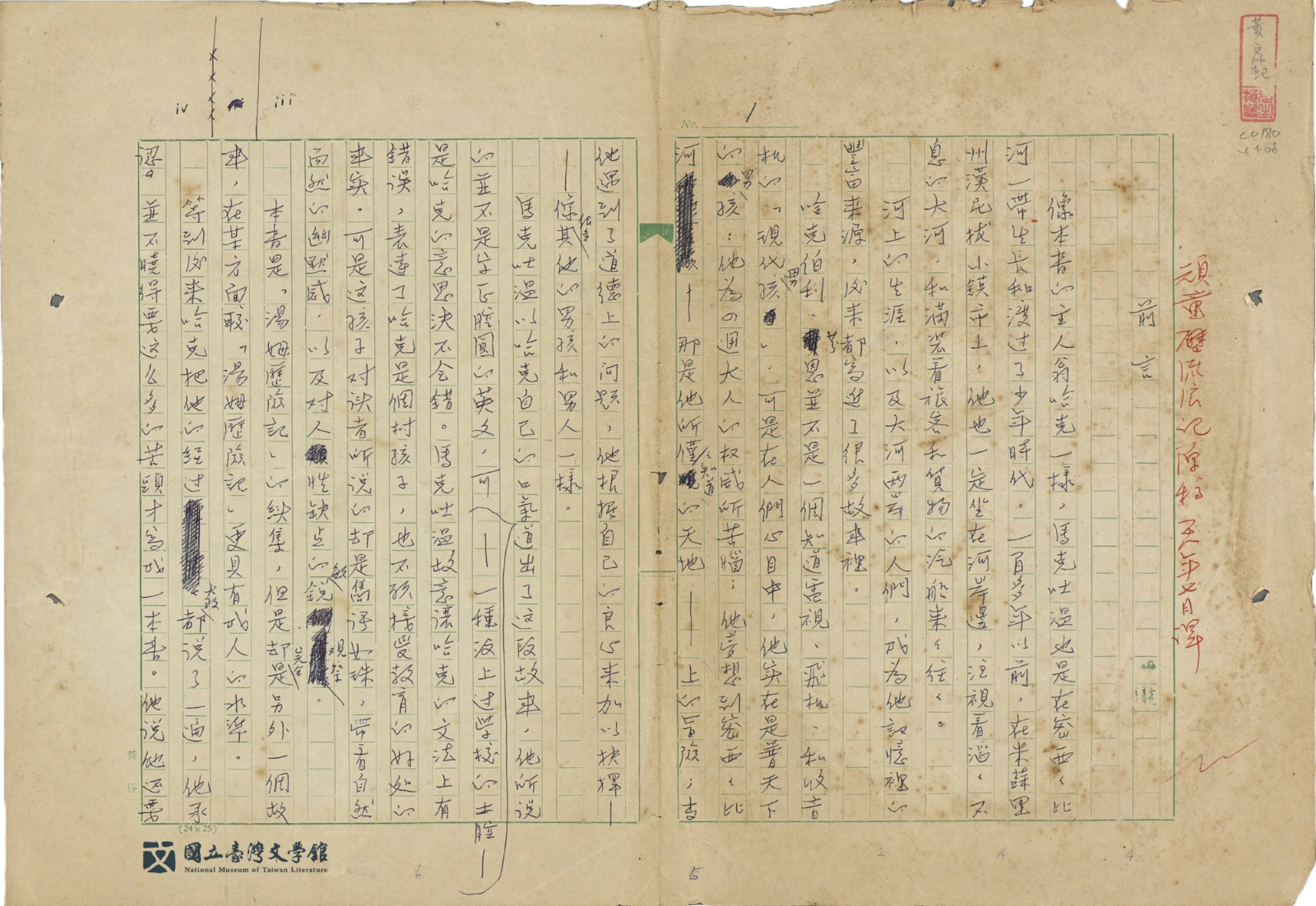
◪ Adventures of Huckleberry Finn by Mark Twain, translated by Huang Wen-fan, 1969
Courtesy of the National Museum of Taiwan Literature Collections.
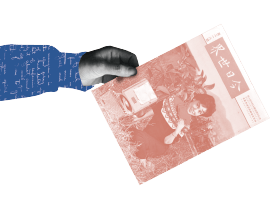
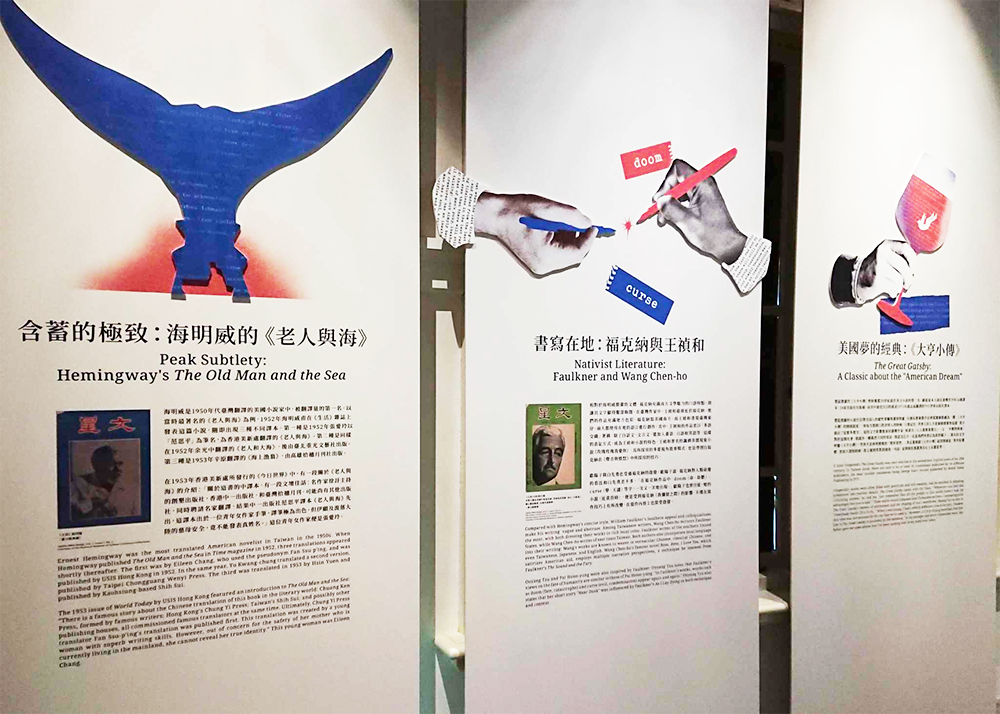
The Great Gatsby: A Classic about "American Dream"
F. Scott Fitzgerald's The Great Gatsby was once selected as the second-best English novel of the 20th century. In Taiwan alone, there are said to be at least 16 translations published by 24 different publishers, the most notable translation being George Kao's version published by World Today Publishing in 1971.
Fitzgerald’s works were often filled with poeticism and rich emotion, and he excelled in blending symbolism into realistic details. The Great Gatsby opens with the lines,
"'Whenever you feel like criticizing anyone,' he told me, 'just remember that all the people in this world haven't had the advantages that you've had.'"
These words would influence later Taiwanese writers—resonating with The Great Gatsby's themes of entitlement and the shaping of one's worldview, Huang Fan writes in "Everybody Needs Chin Te-fu," "When I was young, I had a wholly different view of society. I believe this view was not necessarily the one that we're used to." However, Li Chih-chiang mentions that this line in The Great Gatsby is preceded by the sentence, "In my younger and more vulnerable years, my father gave me some advice that I’ve been turning over in my mind ever since.”
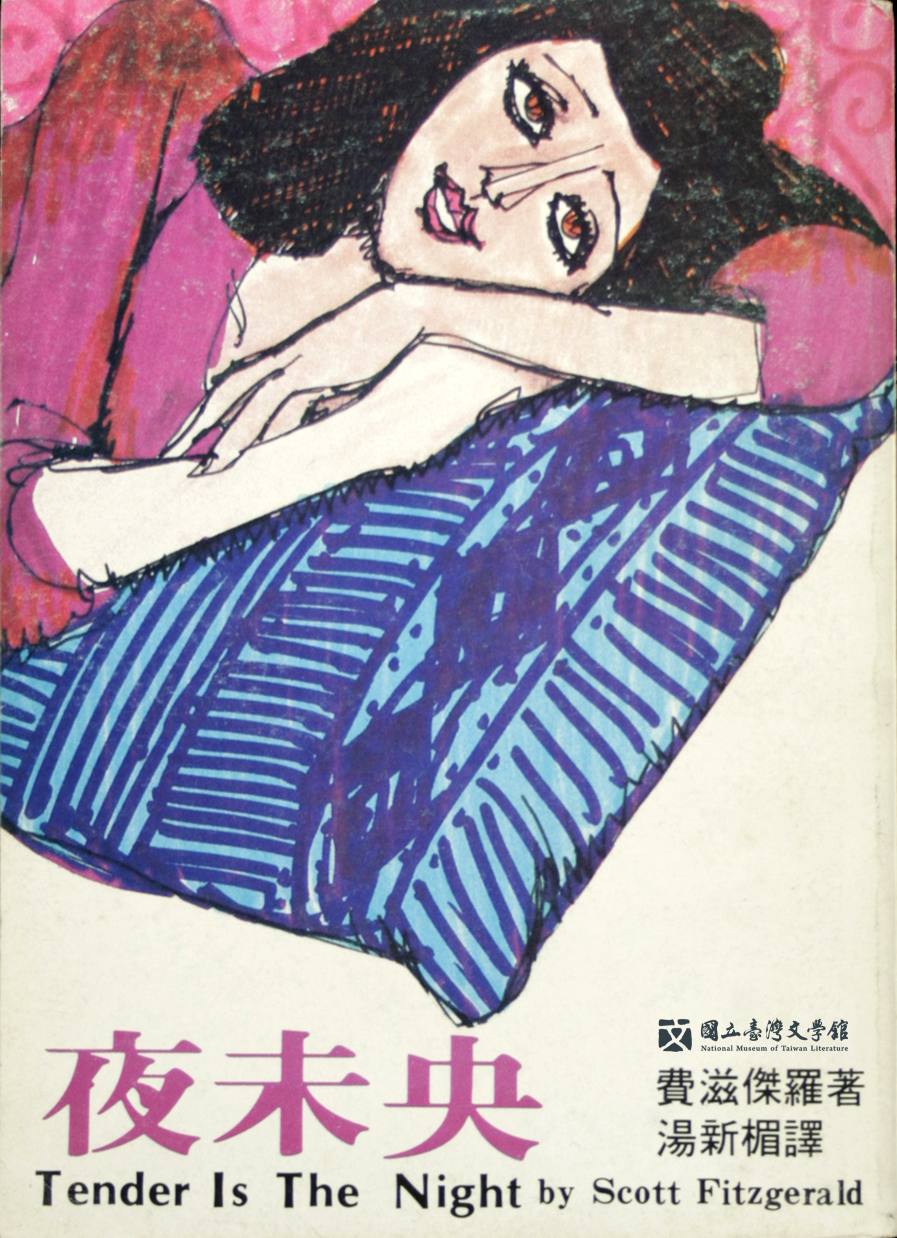
◪ Tender Is the Night by F. Scott Fitzgerald, translated by Tang Xinmei ( Tang Siang) , 1980
Published by World Today Publishing. (Courtesy of the National Museum of Taiwan Literature Collections.)
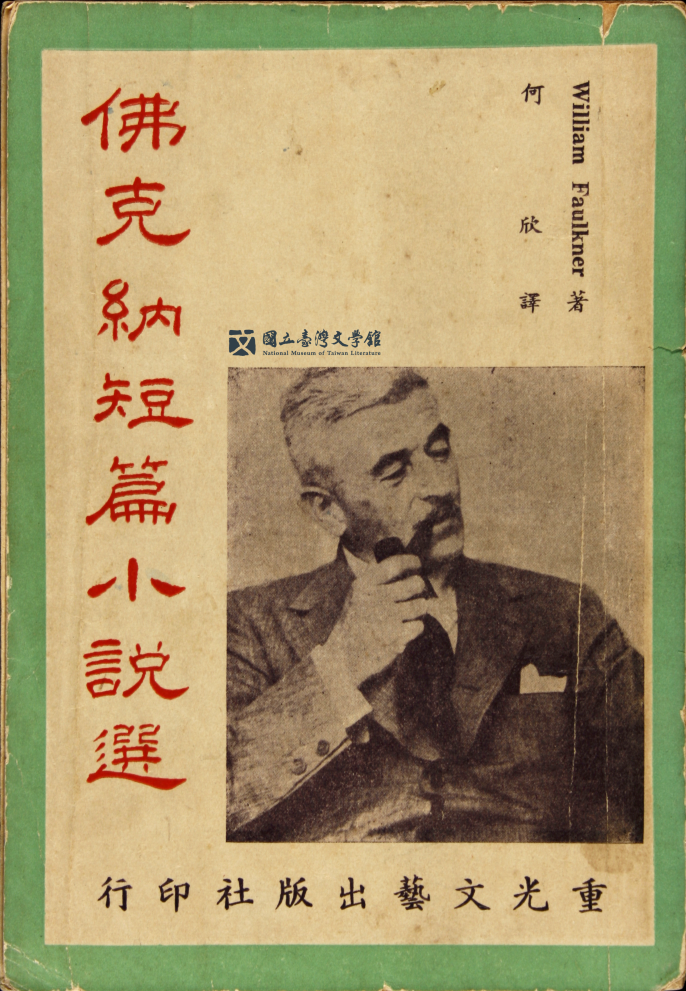
◪ Short Story Collection by William Faulkner, translated by He Xin,1959
Courtesy of the National Museum of Taiwan Literature Collections.
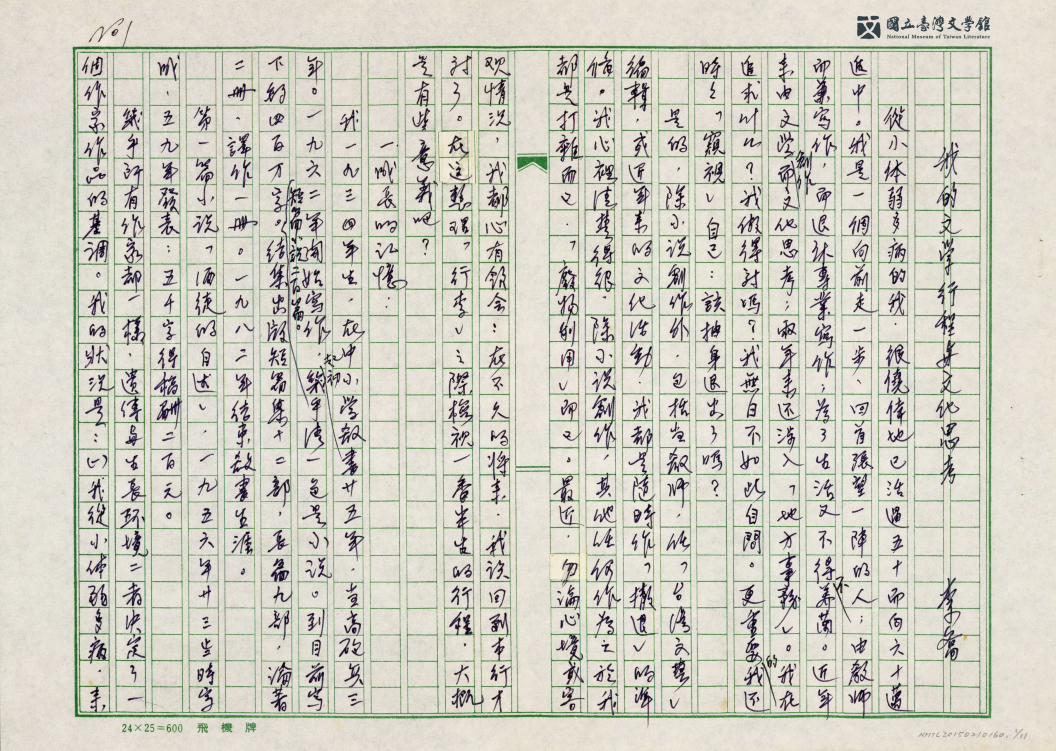

◪ Manuscript "My Literary Journey and Cultural Thinking" by Li Chiao, 1989
The author mentioned his literary upbringing from his growing-up memories and the three writers who had the most profound influence on his writing, namely Zung Seu-Ziin, Cheng, Ch'ing-Wen, and William Faulkner. (Courtesy of the National Museum of Taiwan Literature Collections.)
Nativist Literature: Faulkner and Wang Chen-ho
Compared with Hemingway's concise style, William Faulkner's Southern appeal and colloquialisms make his writing vague and abstruse. Among Taiwanese writers, Wang Chen-ho mirrors Faulkner the most, with both dressing their works in rich local color. Faulkner writes of the southern United States, while Wang Chen-ho writes of east coast Taiwan. Both authors also incorporate local language into their writing: Wang's works are known to weave in vernacular Chinese, classical Chinese, and even Taiwanese, Japanese, and English. Wang Chen-ho's famous novel Rose, Rose, I Love You, which satirizes American aid, employs multiple narrative perspectives, a technique he learned from Faulkner's The Sound and the Fury.
Ouyang Tzu and Pai Hsien-yung were also inspired by Faulkner. Ouyang Tzu notes that Faulkner's views on the fate of humanity are similar to those of Pai Hsien-yung: "In Faulkner's works, words such as doom (fate, catastrophe) and curse (evil, condemnation) appear again and again." Ouyang Tzu also states that her short story "Near Dusk" was influenced by Faulkner's As I Lay Dying in both technique and content.
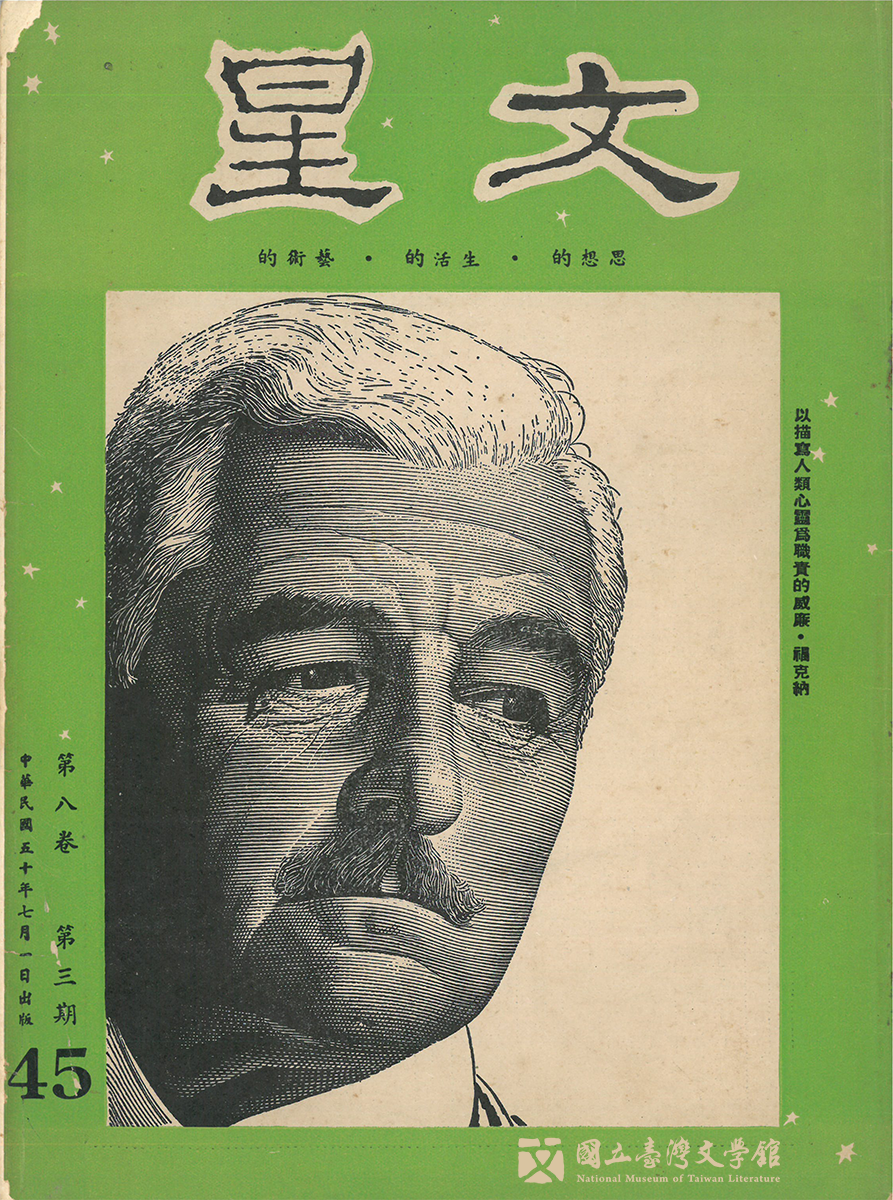
◪ Apollo (Wen Hsing), Vol. 8, Issue 3, No. 45
The theme of this issue is about William Faulkner on the cover and introduces several of his works. (Courtesy of the National Museum of Taiwan Literature.)
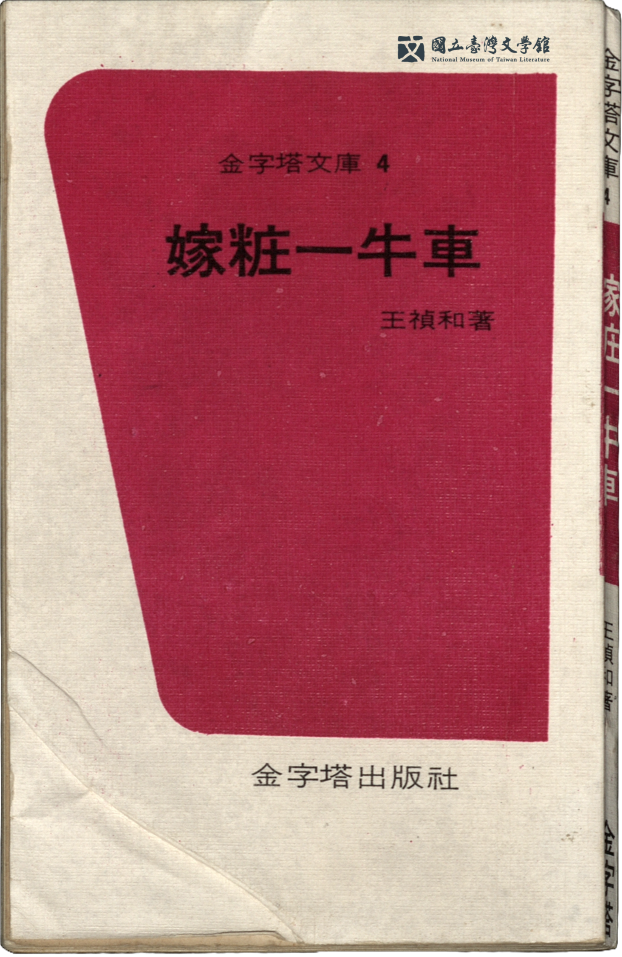
◪ The Ox-Cart Filled with Dowry by Wang Chen-ho, 1969
Published by Pyramid Publishing. (Courtesy of the National Museum of Taiwan Literature Collections.)
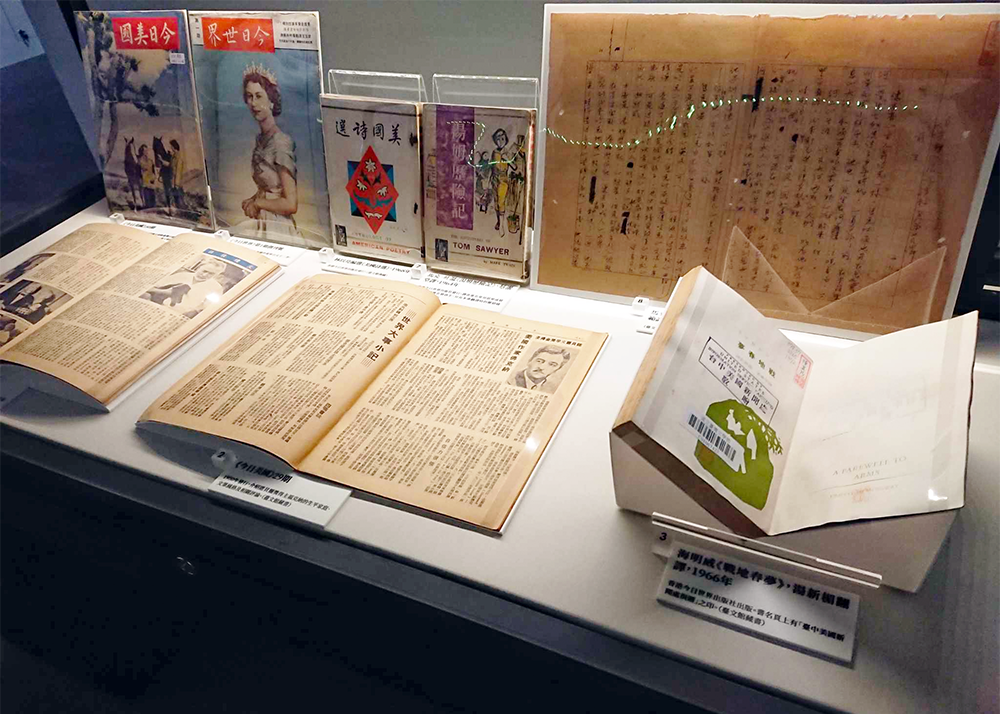
Peak Subtlety: Hemingway's The Old Man and the Sea
Ernest Hemingway was the most translated American novelist in Taiwan in the 1950s. When Hemingway published The Old Man and the Sea in Time magazine in 1952, three translations appeared shortly thereafter. The first was by Eileen Chang, who used the pseudonym Fan Ssu-ping and was published by USIS Hong Kong in 1952. In the same year, Yu Kwang-chung translated a second version, published by Taipei Chongguang Wenyi Press. The third was translated in 1953 by Hsin Yuen and published by Kaohsiung-based Shih Sui.
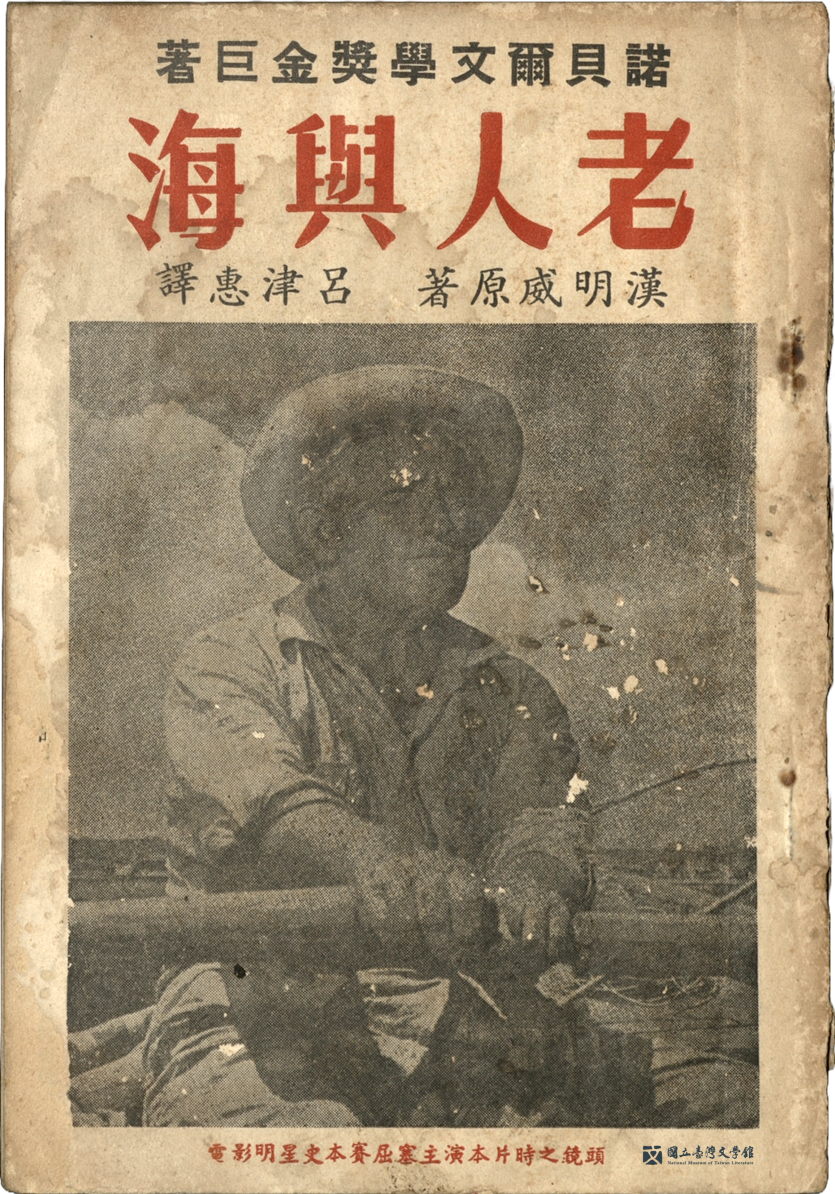

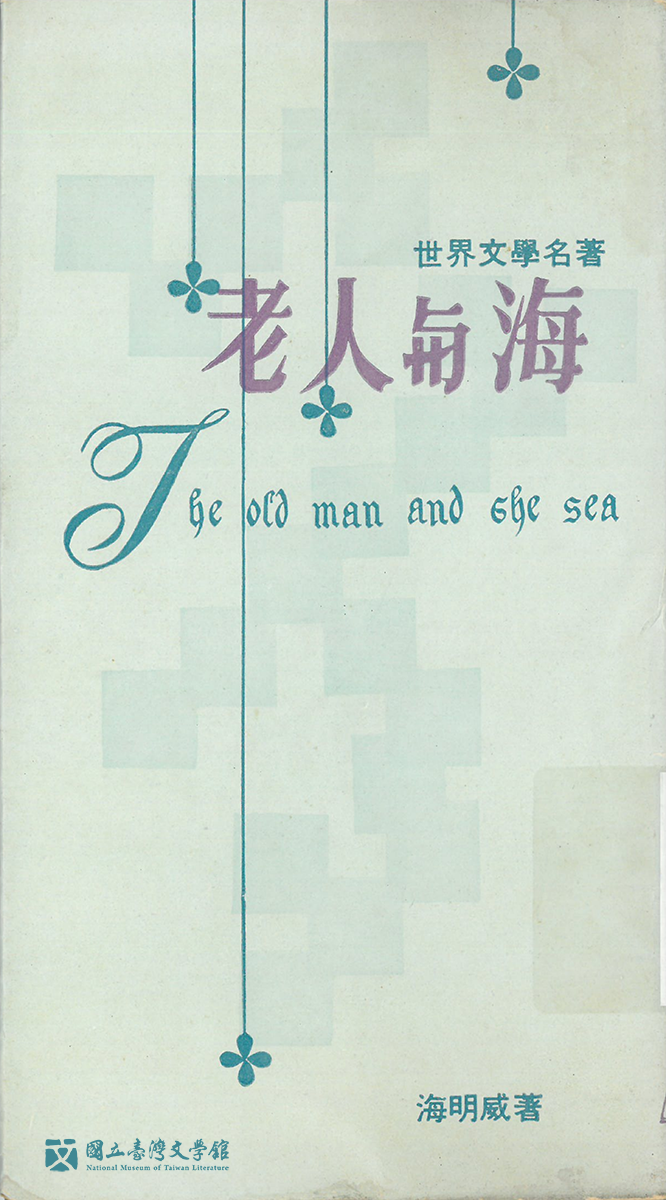
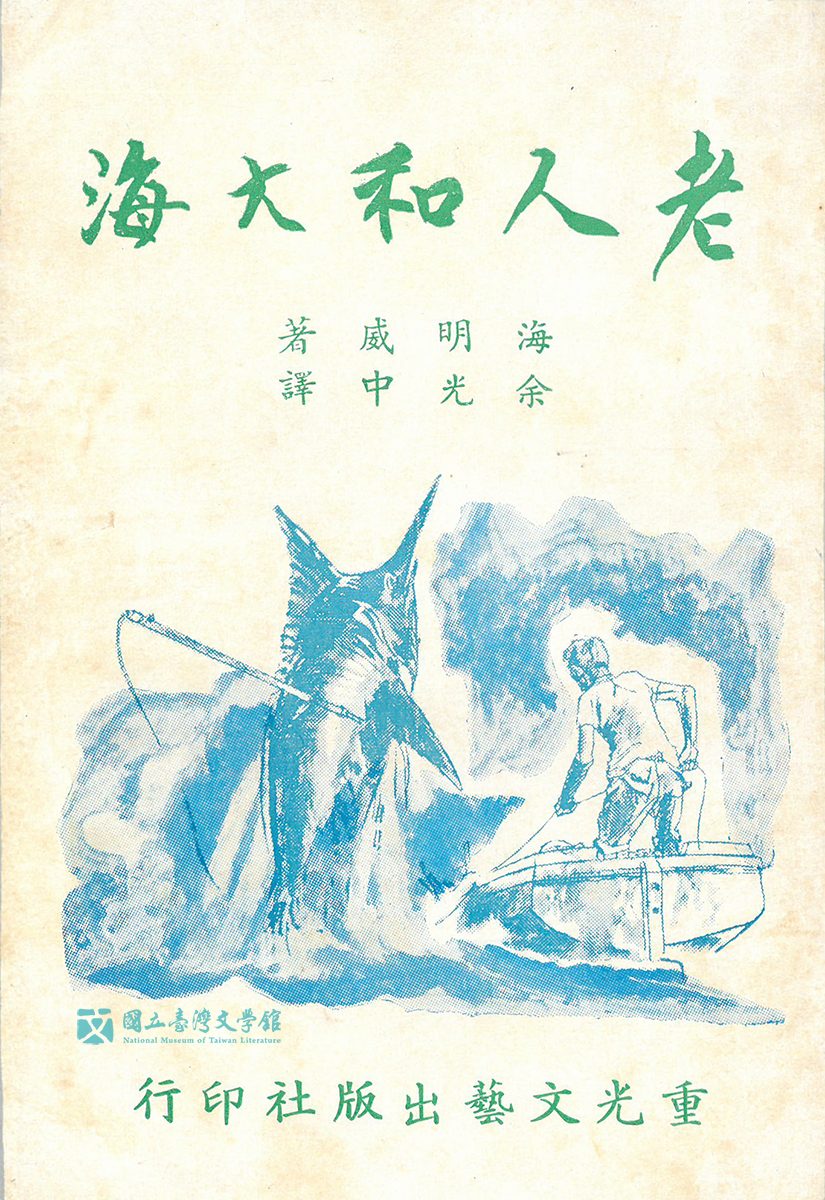
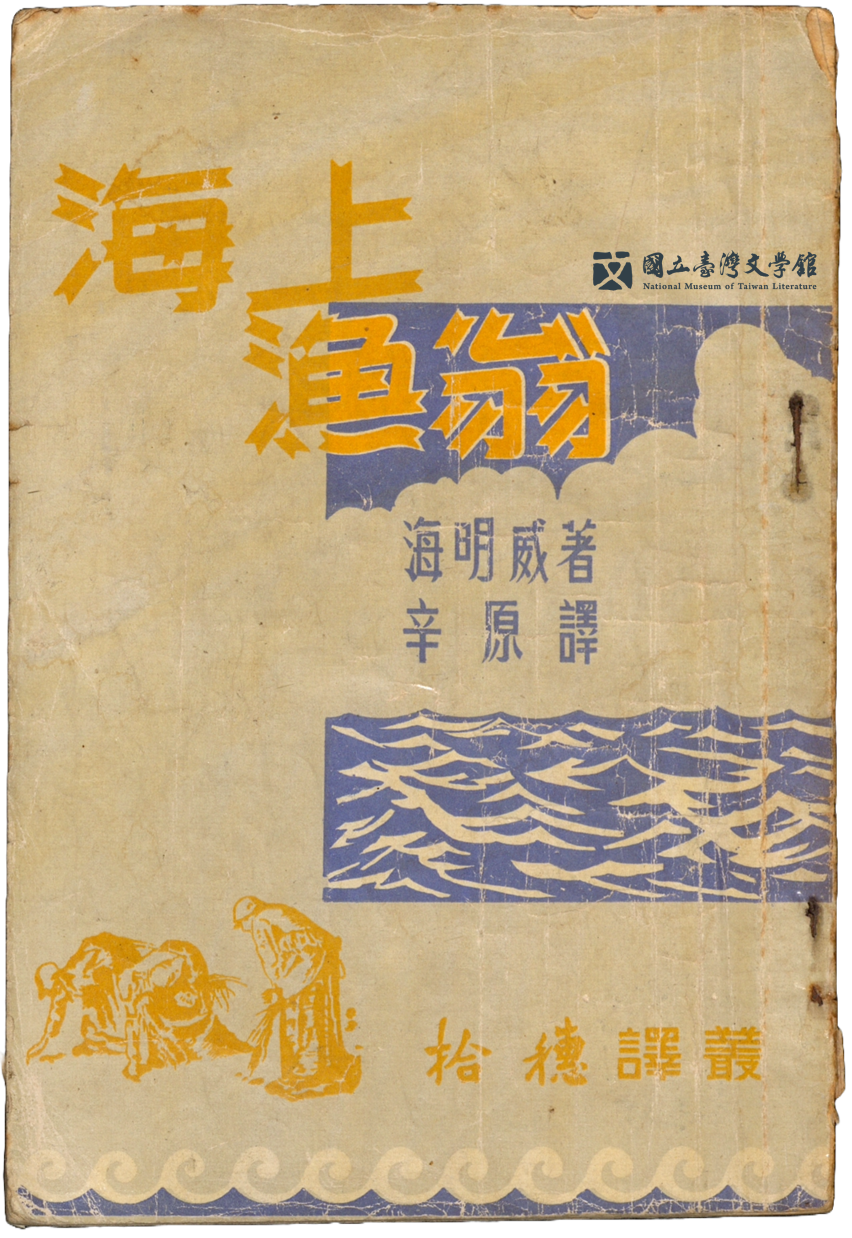
◪ Different Chinese Translations of The Old Man and the Sea
It was translated by many publishing houses at the same time In the 1950s. Common versions include The Old Man and the Sea translated by Fan Ssu-ping (Eileen Chang) and by Yu Kwang-chung in 1952, and The Fisherman On the Sea translated by Xin Yuan in 1953. (Courtesy of the National Museum of Taiwan Literature Collections.)
The 1953 issue of World Today by USIS Hong Kong featured an introduction to The Old Man and the Sea: "There is a famous story about the Chinese translation of this book in the literary world:
Chuang Ken Press, formed by famous writers; Hong Kong's Chung Yi Press; Taiwan's Shih Sui; and possibly other publishing houses, all commissioned famous translators at the same time. Ultimately, Chung Yi Press translator Fan Ssu-p'ing's translation was published first. This translation was created by a young woman with superb writing skills. However, out of concern for the safety of her mother who is currently living in the mainland, she cannot reveal her true identity.
This young woman was Eileen Chang.
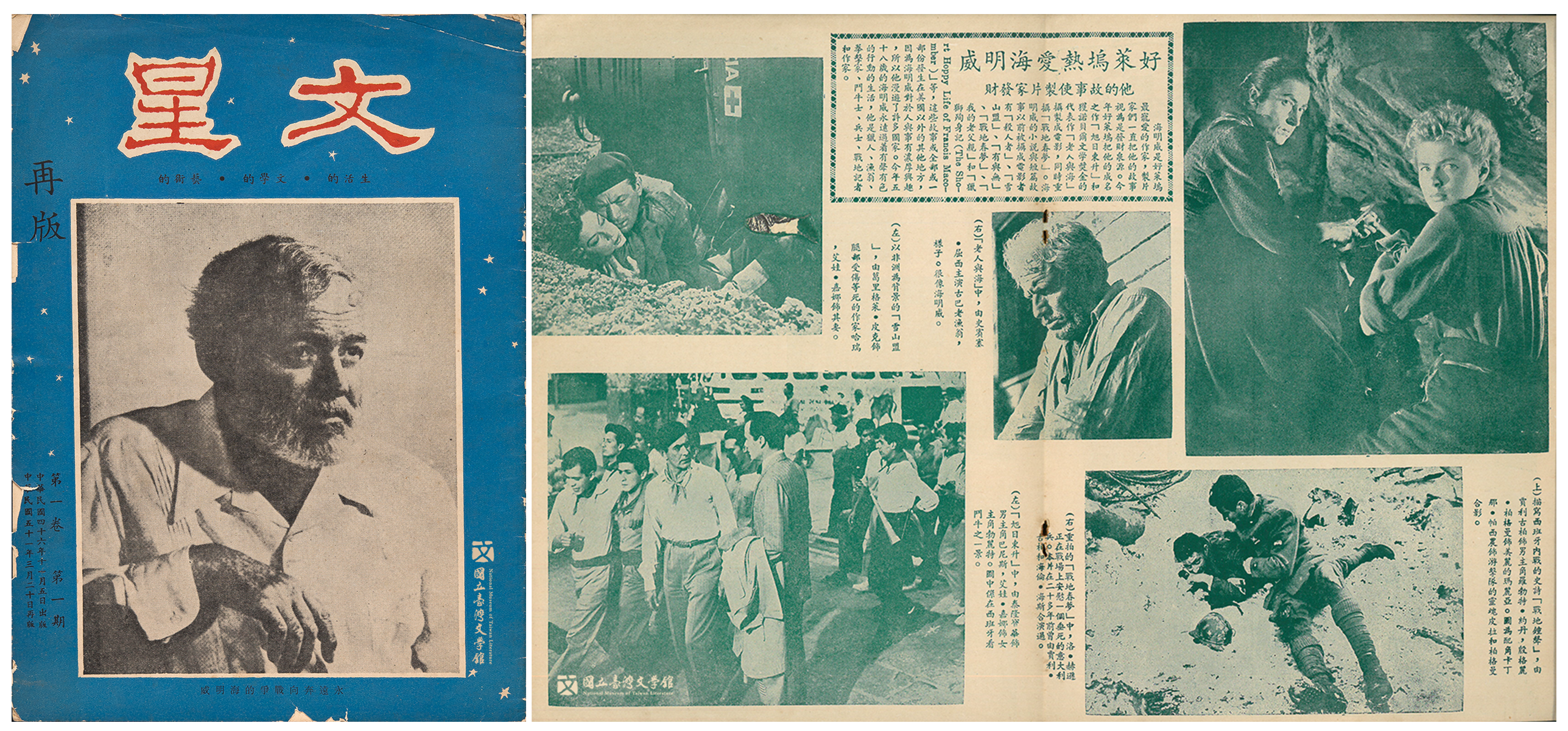
◪ Apollo (Wen Hsing), Vol. 1, Issue 1, No. 1
Founded in 1957 by Apollo Bookstore, the periodical's inaugural issue proposed that it would center on "the literary, the artistic, and life". In 1959, it shifted to "the ideological, life, and the artistic". (Courtesy of the National Museum of Taiwan Literature Collections.)
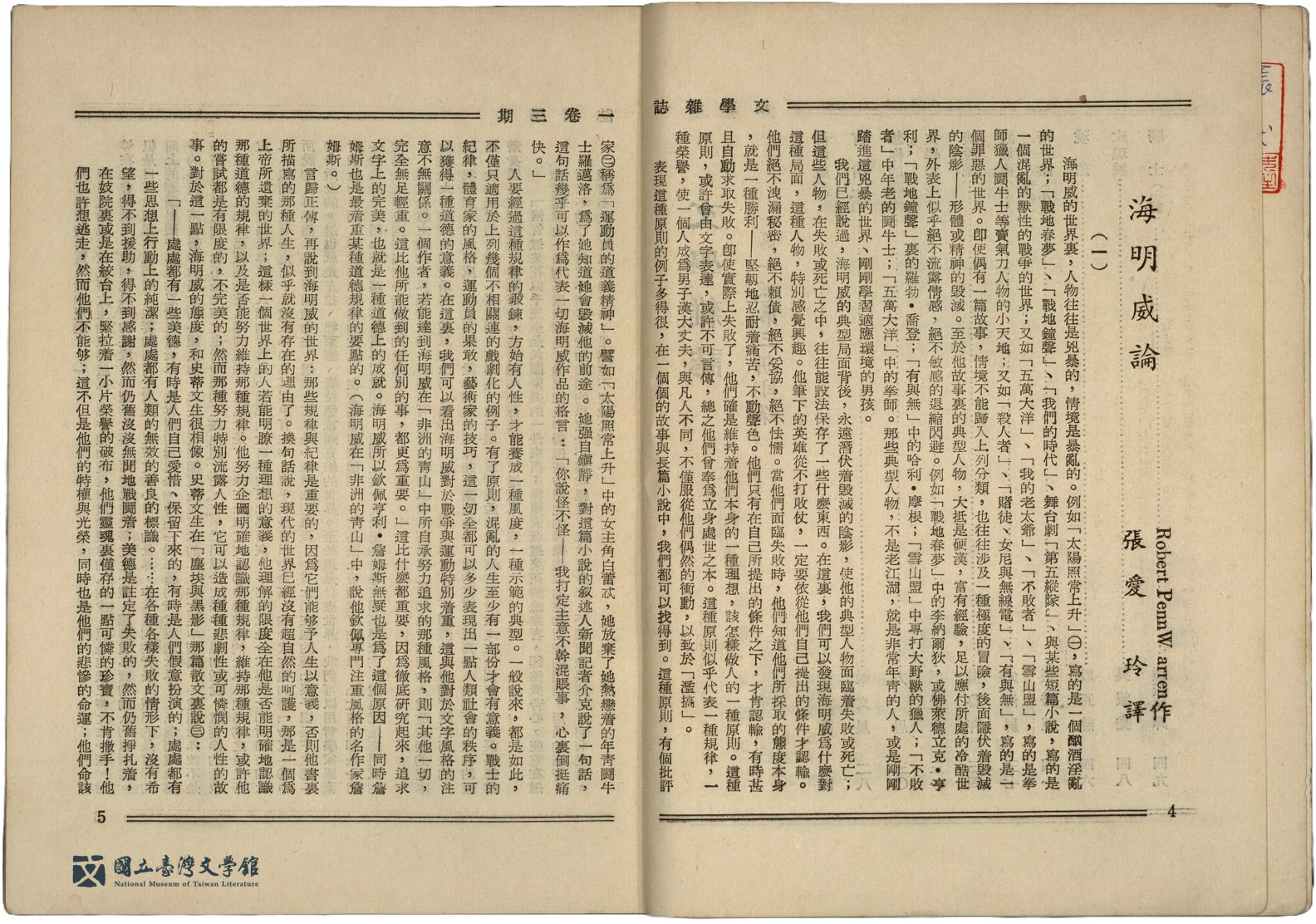
◪ Apollo (Wen Hsing), Vol. 1, Issue 1, No. 1
Founded in 1957 by Apollo Bookst. (Courtesy of the National Museum of Taiwan Literature Collections.)

